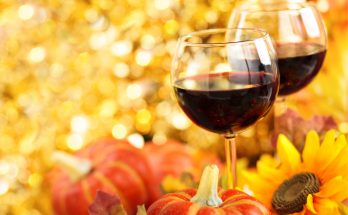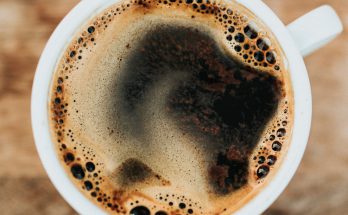In The Bordeaux Kitchen: An Immersion into French Food and Wine, Inspired by Ancestral Traditions, I reveal the three secrets to French cooking that I discovered while living in France: proper utensils, fresh ingredients, and what I call the “Farm Fats.” Armed with these, you can be a French cooking star in your own kitchen!
La Cocotte
First place in terms of usefulness and beauty goes to the cast iron pot, also known as a Dutch oven. Called la cocotte or le faitout (literally meaning “does everything” in French), this is the one implement that allows you to cook pretty much anything. Solid, beautifully enameled, and lasting generations, you can use it on the stove or in the oven, with or without the lid. My go-to brand is Staub because of the sturdy and practical design, including the convex dots on the inside of the lid that allow condensation to drip back down into the pot when covered. Heat is distributed evenly throughout, and food stays warm even when the pot is removed from the heat source. Teflon has no place in a healthy food diet. If your eggs stick to your pan, use more butter!
Don an apron and oven mitts, especially when handling hot pans and liquids, and decorate your kitchen with French-style Jacquard kitchen towels. Having eye-pleasing utensils in your kitchen will elevate your mood while you are in there!
Knives
I learned from French butchers that sharp knives are paramount to avoiding injury because you don’t need to press so hard to slice. Have your knives professionally and regularly sharpened and keep a honing steel nearby to hone your knives before every other use or so. I use the flat side of a santoku-shaped or chef’s knife to crush garlic and then a paring knife to quickly mince garlic, an ingredient in almost every savory dish in my book! I find I can’t live without my mezzaluna knife (it has two handles and a half-moon shape), for chopping fresh herbs quickly.
Fresh Ingredients
Fresh ingredients are really the secret to any cooking. Freshness enhances flavor, and freshly-harvested ingredients are at their most nutrient dense at harvest. Having fresh herbs on hand when possible, or even growing your own mini herb garden outside, inside, or on a window sill, will add to the pleasure and creativity of preparing your meals. Fresh herbs and spices to keep in your house or garden: rosemary, sage, thyme, savory, lavender, vanilla beans or vanilla powder, whole and ground cloves, cinnamon, herbes de Provence. Have a mortar and pestle on hand for grinding spices like peppercorns or coriander seeds, as well as a pepper grinder for the table. Sea salt and freshly ground organic pepper are keys to upgrading the flavor of any dish.
Sea Salt for the Win
Sel de mer, or sea salt can enhance your flavors. The rich mineral content of sea salts is very nurturing to our bodies, as opposed to the industrially processed table salts that are artificially created sodium chloride molecules combined with fillers and desiccants – yuck! A pinch of sea salt goes a long way (a pinch is your thumb and first two fingers.) I always have three mini bowls of salts next to my stove for cooking: coarse (gros), for salting broths and giving texture to roasts and potatoes; fine (fin), for salting everything else; and fleur de sel (the crème de la crème of sea salts, a crunchy, subtle-flavored, medium-sized grain) for topping any dish, including some desserts for that extra je ne sais quoi. Fleur de sel is the top thin layer of sea salt scraped gently from salt beds using a special rake by the devoted sauniers of France.
Farm Fats
Learning to cook the traditional French way involves a lot of butter, olive oil, and, if you are willing, animal fats like lard, tallow, and best of all, duck fat! These “Farm Fats,” as I call them in my book, are all ancestral fats that our great-great grandmothers could have rendered or pressed themselves, in contrast to the industrial seed oils we find on grocery shelves today, such as canola and sunflower seed oils born from an unsustainable method of mono-crop agriculture propped by artificial pesticides and fertilizers. Animal fats in particular hold up to heat without oxidizing, unlike vegetable oils. In my book I go into not only the flavor and satiation that the “Farm Fats” provide, but also their nutritional value, and why they are the reason the French have traditionally the best cardiovascular health, and why the French Paradox” (eat fat, stay slim) should really be called the “French Advantage!” Using adequate fats in cooking enhances flavor, promotes satiety, keeps food from sticking or burning in a pan when you don’t want it seared, and provides the fatty acids our brains and bodies crave and need.
You can be Le Chef
Using these French secrets in your cooking will not only up your game to chef level, but will also increase the number of people who will try to come by for a meal … Bon appétit!



